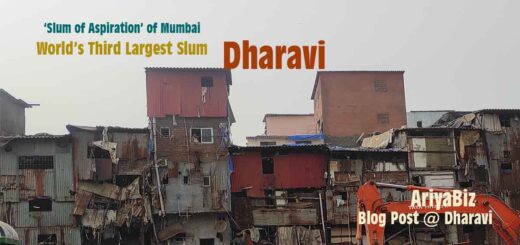Bhutan: Mysterious Nature and Culture
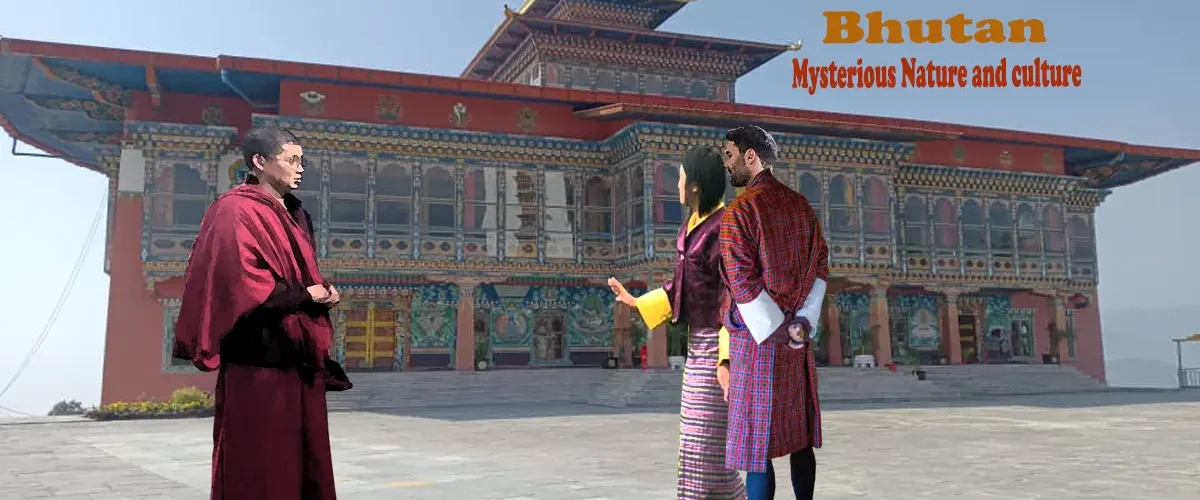
What is Bhutan
Welcome the blog post ‘Bhutan: Mysterious Nature and culture’! In this blog post you are going to discover Bhutan, its culture, its architecture, its food, its dress, its tradition, its religion, its kingdom as well is its Gross National Happiness. Bhutan is well known for vibrant and colorful festivals in the world which is situated between Tibet Autonomous of China and India in the Eastern parts of the Himalayas in South Asia. Where you can see peoples who greet you and welcomes you with a traditional Bhutanese welcoming style. Bhutan is the unique country both culturally and environmentally, where you can see Bhutan Kingdom which provides a political system worth owing to its uniqueness. Bhutan is termed as third economy country. Bhutan is the only country in the world which has banned Tobacco and smoking in the public place & declares as an offence will be punished in fine. GNH Bhutan is the only country to develop the philosophy of “Gross National Happiness” (GNH), where the development by royal kingdom family which measured using happiness of the citizens of country & where development is measured using a holistic approach of well-being of peoples. Bhutan Perched high in the Himalaya, it is the world’s last remaining Buddhist Kingdom. Buddhism is a way of life of Bhutanese. Bhutanese are basically divided into two community groups, Ngalops or Western Bhutanese and Sharchops or Eastern Bhutanese.
To clarify, Drukpas are all Ngalops, Sharecroppers, and native tribal people The Lhotsampas are people of Nepali descent. The national language of Bhutan is Dzongka. Dzongkha language is closely related to the Tibetan language. English is the language of instruction in schools and an official working language for the governmental work. Over time, English is language of schools for communication and is generally understood. Nepali and Hindi are also widely spoken languages.
What Culture you see in Bhutan
Bhutan is a country of Mysterious Nature with both culture of spirituality and environmentally serene natural landscapes. You can see many monasteries here and the people are friendly and loving where you can colorful prayer flags at the entrance of monasteries, Chortens, Lhakhangs.
In monasteries and temples, people adhere to the norms and customs.
In addition, shoes are not permitted within the temple.

Buddhism and Bonism traditions are the perfect fusion in Bhutan’s rich culture. This is why; the primary factors attracting attention from throughout the world are the nation’s distinctive culture and traditions. In Bhutan, people connect their palms in greeting. Bhutan can be an only country where education is free and all citizens have access to free, although rudimentary, medical care. The sale of tobacco products is banned and smoking in public areas is an offense punished with fines. For you Bhutan’s culture will be fascinating.
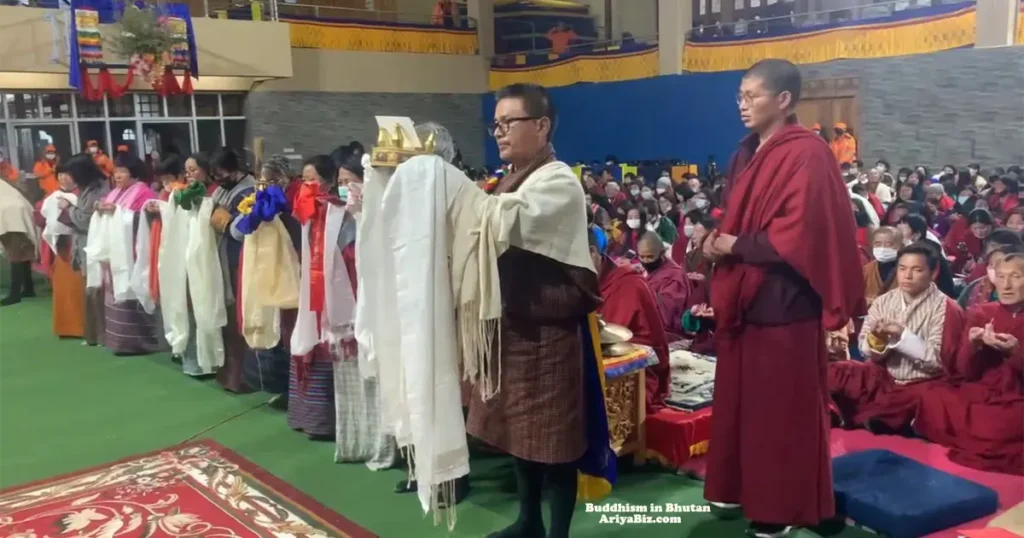
Bhutan government seems to preserve, maintain as well as promote their social, cultural along with religious values. Archery is the national sport of Bhutan. You can see prayer flags in every some distance. These prayer flags are in the memory of passed away person in family or friends.
National dish of Bhutan is ‘Ema Datshi”. Food of Bhutan usually consists of spicy chilies and cheese. Momos are yet another favorite food here. Bhutan foods are filled with pork, beef, or cabbage also. Marriage is typically not a major affair; the wedding ceremony is kept modest. It is accepted in this culture to marry with cousins.
Birth Ceremony in Bhutan
We want to familiar you with the fact that Bhutan is one of the few nations in the world that does not differentiate between boys and girls are this one.
Birth of kid in family is celebrated by family. For three days visitors are not permitted inside the new born kid room. Visitor can visit the new born by the ceremony of purification. To the point, local lama keeps the new born baby’s name. Instead, the name is a mixture of two conventional names, with the second name typically designating the gender.
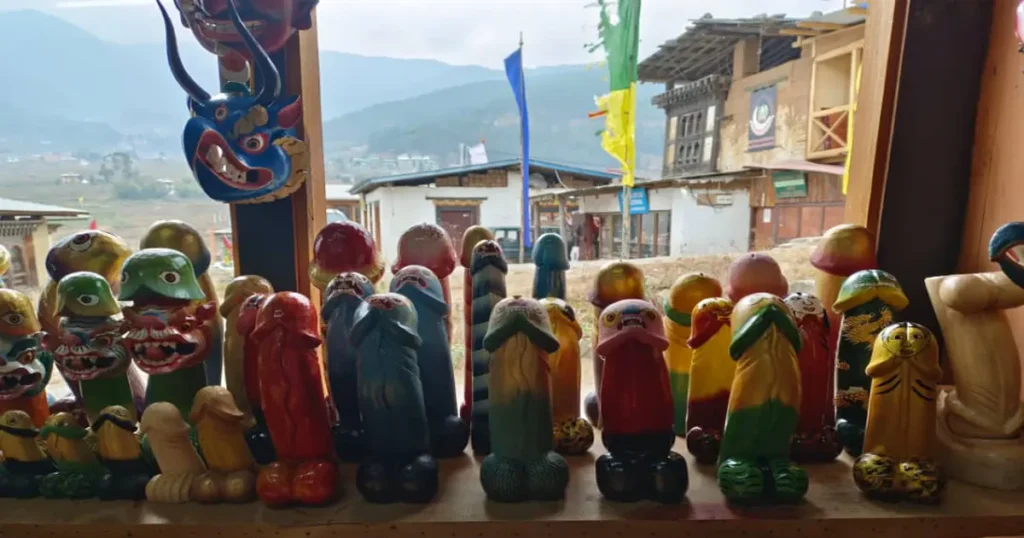
Bhutanese Etiquettes & culture of greeting each other
Bhutanese always respect each other with slightly blow with opening palm of hand. Kissing in public places is prohibited. They respect each other in their communication also. To show respect each other they add ‘la’ to the end of every sentence.
Like this ‘ Kuzungpo la’ when speaking with elders.
While speaking with children not necessary to add ‘la’.
‘Jen Pa Leg Sho’ means ‘Welcome after conversion.
Welcome of invitation means ‘Tashi Delek’
‘Thank You’ mean ‘Kaadinchhey la’
How are you? mean ‘ Ga Day Bay Zhu Yoe Ga?’
Good night means ‘ Lek shom ay zim’
Excuse me means’ Tsip maza’
Traditional Dresses of Bhutanese
Bhutanese women wear “Kira,” while men wear “Gho.” Gho is a bulky, belt-tied knee-length robe. Kira is an ankle-length dress that can be covered by a short jacket. Bhutan’s traditional clothing has changed over time & you like to dress it.
Bhutan’s festivals, architecture, cuisine, and traditional clothing all define its culture. Many people are still wearing traditional Bhutanese attire. The law mandates that national costumes be worn in all public settings, particularly during religious holidays.
Festivals of Bhutan
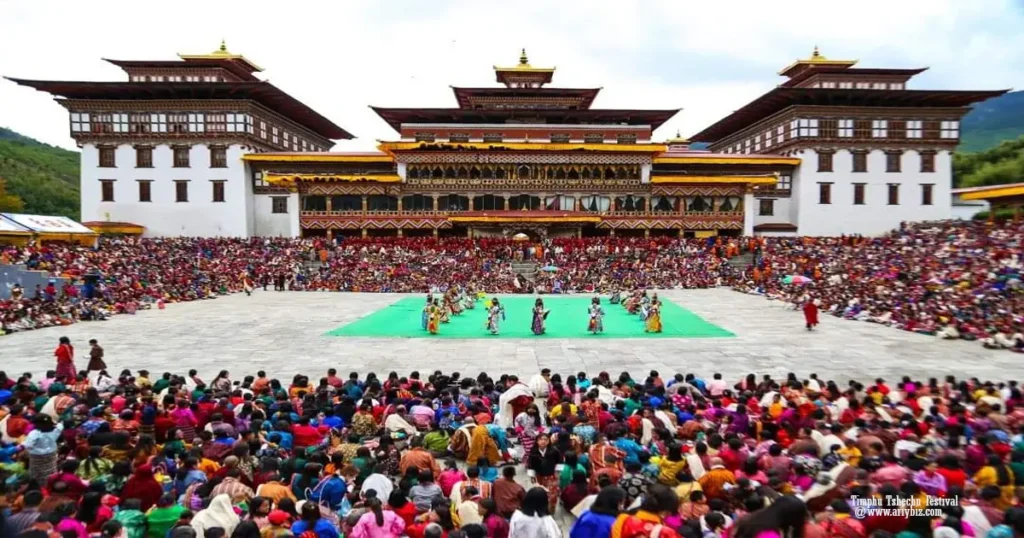
Culture of Bhutan is always festive. The festivals in Bhutan are a fun event in the lives of the people there and are an essential component of their distinct culture. Every city has an own Tshechu that celebrates nearby three to five days. The Tsechus are a rich form of oral history that the Bhutanese use to transmit their values. You can be one of them if you visit in festival of Bhutan.
For you here are the festival by its Popularity are Paro Tshechu, Timphu Tshechu , Jambay Lhakhang Tshechu, Punakha Drubchen Tshechu, Ura Yakchoe Tshechu, Wangdue Tshechu, Tamzhing Phala Choeta Tshechu, Kurjey Tshechu. The most well-known is Thimphu Tshechu, and for this festival nearby 30,000 visitors visits this festival. The highlight of the Tshechu ceremonies is the masked dances by monks, which were developed according to precise instructions given by past Buddhist Monks.
The main things of a Tshechu are the masked dances, or chham. Monks and laypeople perform dances that depict events from Guru Rinpoche’s life while dressed in silk robes and animal masks. Viewing these dances, which are infused with sacred symbolism, is thought to be a very auspicious and sanctifying experience because, in accordance with Buddhist philosophy, every experience leaves an imprint in the mind stream that results in a corresponding outcome in the future.
Through the dance dramas, mythology and spirituality can be seen. Dresses of silk applique thangkha (painting) featuring Guru Padmasambava or another significant Buddhist deity performed in many Tsechus. A silk thongdrel is typically unfurled on the final day of the tshechu. It is believe in Bhutan that seeing a thongdrel will wash their sins away.
Bhutan’s music and dance styles
Every festival and celebration in Bhutan includes the country’s unique music and dance styles, which draw their primary inspiration from religion. The entire nation honors its history through dancing and singing at yearly celebrations like Tshechus, the birthday of the king, etc. The national dances are called chham dances, or masked dances, and they primarily feature scenes from Guru Rinpoche’s life being reenacted. Joenpa, Legso, Drametse Nga cham, Pa cham are well appreciated dances in festival seasons. Zhungdra dance is said to be royal dance form. Bhutan’s diverse artistic disciplines are influenced by Buddhism. Another characteristic that sets Bhutanese culture apart is its architecture. Buddhist religious traditions are reflected in the arts and architecture.
Bhutan Architecture
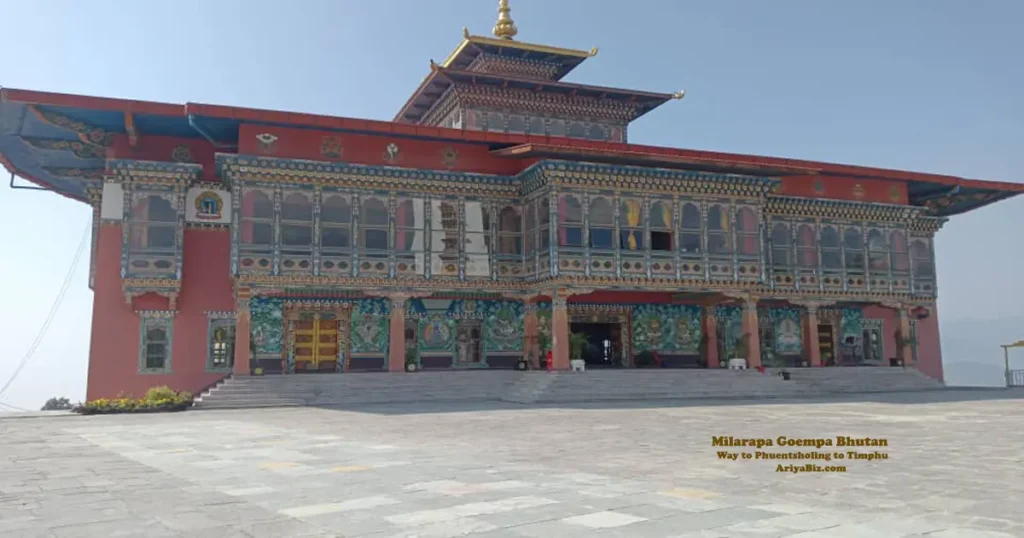
The traditional architecture in which still exists and features of sloped roofs, earthen walls, and intricate wooden work, was developed in accordance with the geography and climate of the country.
Wall phalluses are revered as sacred objects. In the building, there are no nails made of iron. You should be cautious & respect monks who may be praying or meditating and do not disrespect people, deities, statues, religious paintings, or any other object. You will be surprise by giant penises that are painted on the walls of houses in symbolism of fertility god which is a respected Tibetan saint pray by Bhutanese.
Beliefs of Bhutan
It is said that, never touch someone’s head’s crown, even a young child, as this is regarded as a sacred area of the body. When circling to pray a stupa which is known as chorten, revered site, or prayer wheel in monasteries, move in a clockwise direction. In Bhutan, it’s wise to always ask permission before taking a picture of a monk or another individual.
Symbolism in a Bhutan National Flag

Flag is divided in two parts, upper part is of yellow color symbolism of kingdom of Bhutan. Lower part of flag is of Orange color in representation of Spirituality of Buddhist teaching. The Druk or white dragon consider as the thunder dragon. The country is named of this white dragon in the symbolism of purity. Dragon is beloved to be symbolism of Country’s wealth.
Kingdom of Bhutan
Bhutan, the land of the Dragon Kings was founded by Shabdrung Ngawang Namgyel who unified the country into one religious state in 1616. Jigme Khesar Namgyel Wangchuck, the fifth ruler of Bhutan Said to be young king to guide young democracy. The young king began his reign overseeing the democratization of Bhutan by presiding over the last sessions of the parliament where electoral laws, land reform and other important issues were debated. Bhutan’s government institutions were also restructured introduce parliamentary system, though the king retained firm control over the country’s political life.
Conclusion
Lastly the final word, as you explore Bhutan & you familiar with its culture, its architecture, its food, its dress, its tradition, its religion, its kingdom you will be fascinate by its mysterious nature by philosophy Gross National Happiness.
Enjoy Bhutan.
Just like, share & comment our blogs & don’t forget to affiliate with us for your developing business growth with AriyaBiz.com.
Keep Reading! Thank you
You may like
Corporate Gifting ethics of Giving in business
Mental Maths: Glimpses of Mathematics
Corporate Gifting Product Ideas
Dharavi: Slum of Mumbai Aspiration
.

